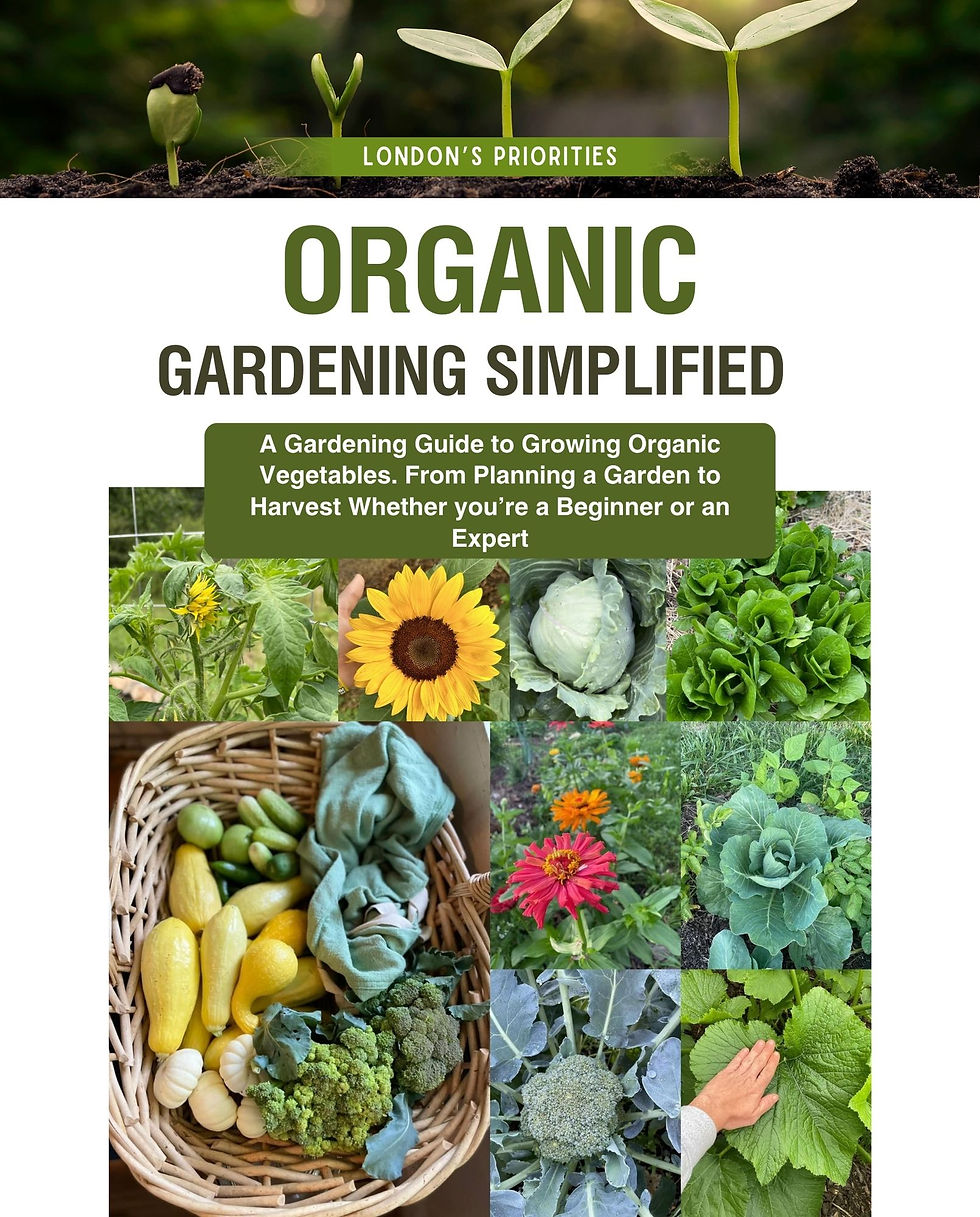Organic Gardening Simplified PDF Version
Written By Megan London Owner of London's Priorities, who has over 25 years of gardening experience. Organic Gardening Simplified is written in a way to be a basic quick reference guide for new or beginner gardeners. Learning these basics will help you develop a strong foundation in all your organic gardening endeavors. As you proceed in your gardening adventures you can use this book as a reference to help you build the foundation of knowledge needed to improve your gardening skills year after year. Below is a list of contents from within Organic Gardening Simplified.
Once Purchased, you will instantly be able to download this version of Organic Gardening Simplified.*This format is best viewed on a laptop or PC.
Chapter 1. When to plant what
1.1 Growing Zones
1.2 Frost Dates
1.3 Determining When to Plant
1.4 Lunar Planting
Chapter 2. Soil Health
2.1 Living soil
2.2 Soil Composition
2.3 Soil Ph
2.4 Soil Nutrients
2.5 Composting
2.6 Amending Soil
2.7 To Till or No-Till
Chapter 3. Seed, Seedling, & Plant Anatomy
3.1 Anatomy of Seeds
3.2 Anatomy of Seedlings
3.3 Anatomy of Plants
Chapter 4. Pollination
4.1 What is Pollination
4.2 Hand Pollination
4.3 Hand Pollination Tips
Chapter 5. Starting Seeds and Propagation
5.1 Starting Seeds Indoors
5.2 Transplanting
5.3 Propagation
5.4 Direct Sowing
5.5 Seed Saving
5.6 Seed Storage & Shelf Life
5.7 Common Plant & Seedling Issues
5.8 Common transplanting issues
Chapter 6. Pest in the Garden
6.1 Beneficial Pest
6.2 Unwanted Pests & Prevention
Chapter 7. Plant Families
7.1 Plant family chart
Chapter 8. Companion Planting
8.1 What is Companion Planting
8.2 Benefits of Companion Planting
8.3 LIst of companion plants & benefits
Chapter 9. Crop Rotation, Cover Crops & Bumper Crops
9.1 Crop Rotation & Soil Health
9.2 Crop Rotation & Pests
Chapter 10. Fertilizing
10.1 Fertilizing Schedule
10.2 Types of Fertilizers
10.3 Making All Natural Fertilizers
Chapter 11. Observing Nature
11.1 Topography
11.2 Soil
11.3 Erosion
11.4 Precipitation
11.5 Natives
11.6 Invasives
11.7 Wind
11.8 Climate
11.9 Sunlight
11.10 Irrigation
Chapter 12. Planning a Garden
12.1 Observing Nature
12.2 WiSh List of Plants
12.3 How to Categorize Your Lists
12.4 Developing Schedules for Planting
12.5 Square Foot Gardening
Chapter 13. Plant Care & Gardening Maintenance
13.1 Watering
13.2 Shade Cloths
13.3 In the case of Frost
13.4 Mulching
13.5 Weeding
13.6 Harvesting
Chapter 14. Garden Terminology
Disclaimer:
This version is best viewed via a laptop or PC. This version may not be compatible with Kindle devices. Please ensure you know if your device is a PDF view compatible device before purchasing. All sales are final.

















